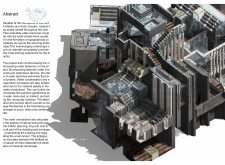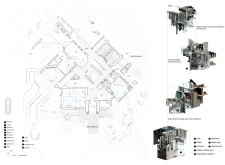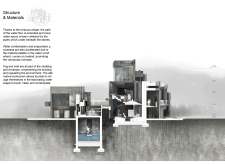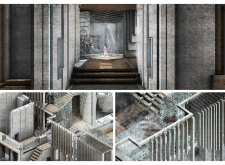5 key facts about this project
Situated at the conjunction of the North Atlantic and Arctic Oceans, the design focuses on exploring water's unique characteristics in one of the most dynamic environments on Earth. In Iceland, where rainfall and geothermal activity are abundant, the architecture engages with the landscape to reflect local narratives and traditions. The aim is to create an experience that blends nature with human interaction, using innovative design strategies.
Design Approach
The concept hinges on fostering interaction between the public and the water landscape, which features waterfalls and plateaus. This is achieved through the implementation of customized water channels and devices that respond to the environment. These features guide visitors in a tactile exploration of moving water, allowing them to feel its various states. The intent is to support eco-tourism by encouraging meaningful connections with nature through various sensory experiences.
Spatial Arrangement
The planning incorporates a holistic approach, using fog and mist within the building's design. These elements add to the structure's aesthetic and help control the internal atmosphere. This approach mirrors the local climate while contributing to the overall experience. Integrating these natural components emphasizes the connection between the architecture and the environment.
Visitor Interaction
The layout promotes exploration, encouraging movement and discovery among the water elements and the surrounding terrain. Thoughtful spatial arrangements create spots for sitting, resting, and contemplating. These areas enhance the relationship between the built environment and nature, inviting visitors to appreciate the landscape's nuances in a more personal way.
Connection to the Landscape
While specific materials are not detailed in the presentation text, the design emphasizes interactivity and responsiveness. Material choices likely enhance the experience of the landscape's natural qualities. The overall design encourages visitors to engage with the environment thoughtfully, allowing them to witness the beautiful shifts in water and landscape. Here, the architecture becomes a medium for experiencing the rhythm of Iceland's waterscapes.






















































